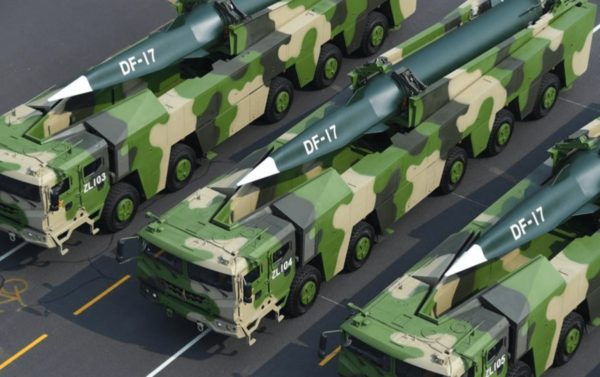
China’s ‘Record-Shattering’ Speed! Australian Invention Propels Chinese Researchers To Achieve A Mind-Boggling Speed Of Mach 33
This facility is based on a design designed by Australian scientists. This can simulate a severe flying state with speeds of up to 33 times the speed of sound, or between 1.5 and 11.5 kilometers per second (2.5 to 7.14 miles per second).
This project will allow high quality and low -cost wind tunnel tests for hypersonic research, said SCMP report.
Beijing has advanced hypersonic technology quickly for commercial and military applications. According to Chinese researchers, the latest laboratory of Sichuan Province is expected to immediately support a variety of missions.
These missions include the launch of Chinese astronauts to the Moon and the development of hypersonic aircraft that can go anywhere in the world in just one hour.
The report said that the testing tube was worth it twice as big as a similar facility in the west, with a diameter of 80cm (2.6 feet).
“(We) have built the world’s largest free-piston expansion tube tunnel with high enthalpy,” said the project team led by Lyu Zhiguo from the Hypervelocity Aerodynamics Institute under the Chinese Aerodynamics Research and Development Center in Mianyang. The intensity of heat in the air is measured by enthalpy.
This can be used for high-level national engineering projects such as capsules of returning land landing projects, inter-star exploration aircraft development that can enter the alien atmosphere, and the creation of scramjet-powered aircraft that can travel at hypersonic speeds.
In recent decades, a large number of wind tunnels driven by pistons have been built throughout the world. However, the largest expansion tube, with a diameter of about 40 centimeters, is the X3 expansion tube at the University of Queensland until now.
Tunnels driven by free pistons are known as stalker tubes, and Australian space engineers Raymond Stalker designed it in the 1960s.
Large wind tunnels were developed by the Soviet Union and the United States during the Cold War to examine flying in Hypervelocity, or greater speed than Mach 5. In this wind tunnel, extreme flight conditions are usually simulated using heat hydrogen gas.
However, because hydrogen is expensive, difficult to store, and very explosive, development, use, and maintenance is expensive and complex. Stalker suggests a new concept that will move the piston with high -pressure nitrogen, cheap inert gas that contributes 80% of the atmosphere.
When heavy pistons are pushed to a speed of several hundred kilometers per hour, it can compress the air and penetrate several strong membrane layers to produce hot shock waves and very fast. This shock wave is proportional to what the aircraft experienced when traveling at hypersonic speeds.
Canberra also made progress in this area because of the wind tunnel driven by the piston developed by Stalker and his colleagues in the 1980s. Australia, a small player in the space race, has created the latest hypersonic aviation technology, such as scramjet, with a little investment and labor.
This nation also seems to be a player that appears in a hypersonic race. For example, stalker tubes are so effective that the US and Australia signed a contract in 2020 to work together to build a vehicle sliding hypersonic.
What’s new in Chinese facilities?
The report noted that Chinese facilities were more than just an enlarged version of the Australian tunnel. Chinese scientists claim that the X3 tunnel connection to the high -pressure nitrogen tank, which vibrates with the tube when the piston moves, can endanger the accuracy of the soil test results.
The nitrogen storage component is wrapped around the piston launch tube, according to the Chinese team, which claims this is the solution they found for this problem. The new design not only decreases the size and complexity of all facilities but also reduces vibrations to a small portion of conventional stalking tubes.
840-kilogram piston (1,852lb), the toughest piston ever used in wind tunnels, presenting other difficulties. The piston will accelerate up to 540 km/hour and must withstand the pressure of destruction from compressed air equivalent to 10,000 times the force of gravity.
The Lyu team said that the piston passed many intense and recurrent tests without scratches because of the new structural design and the use of new materials. They claim that “full reuse” piston will greatly cut the operational costs of wind tunnels.
Chinese researchers also apply additional modifications, such as putting a tube on the rail to help absorb recoil made by the launch of the piston. But there is a severe problem with all stalker tubes. They only develop simulations that last for a thousand seconds or less.
This time is not enough for some experiments, such as studying the chemical interactions of air molecules at high temperatures and testing magnetic fluid power generators that can absorb heat from the surface of the aircraft and convert them into electricity.
This new facility will collaborate with existing type of wind tunnels to provide more detailed scientific data for Chinese hypersonic research.

